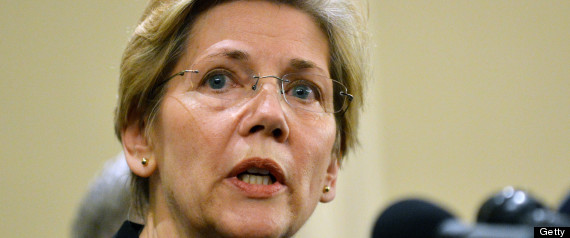
The letter follows months of criticism from Warren over weak penalties imposed on banks accused of defrauding consumers and investors. She has denounced settlement strategies that allow financial firms to set aside past violations without acknowledging wrongdoing.
Wednesday's letter addresses a settlement among the U.S. Department of Justice, the Federal Housing Administration and 49 state attorneys general over charges that major banks submitted a torrent of false claims in pursuit of government benefits. In February 2012, Bank of America, JPMorgan Chase, Wells Fargo, Citigroup and Ally Financial agreed to pay $25 billion to settle allegations that they forged signatures, fabricated documents and engaged in other illegal practices during foreclosures.
The DOJ claimed the violations allowed banks to push through improper evictions, and receive government compensation for loans that homeowners did not repay. In the worst cases, homeowners were evicted without actually defaulting on their loans. In many others, banks instructed families to miss loan payments in order to apply for bank and government assistance, only to foreclose on them once the loan entered default proceedings.
"I am concerned that this might be yet another example of the federal government's timid enforcement strategy against the nation's largest financial institutions," wrote Warren. "I believe that if DOJ and our banking regulatory agencies prove unwilling over time to take the big banks to trial or even require admission of guilt when they cheat consumers and break the law -- either out of timidity or because of a lack of resources -- then the agencies lose enormous leverage in settlement negotiations."
Warren called on the DOJ to avoid "settling on the cheap," and said that "rushed and inadequate settlements fail to fully compensate victims and taxpayers, and insufficiently deter future misconduct."
While the headline dollar figure is the largest ever for a settlement against financial institutions, banks were able to reduce their liability with standard cost-saving business practices -- many of which they already were legally required to perform. In several cases, the government effectively paid banks to lower their own costs. Warren's letter takes specific aim at one type of violation included in the settlement deal, in which banks paid $225 million to get off the hook for submitting false mortgage insurance claims to the government. In Warren's calculations, the number of total insurance claims submitted by the banks between October 2008 and September 2010 would have subjected them to $37 billion in total liability, had every claim been fraudulent -- indicating that the government had only been compensated for 0.6 percent of the potential maximum. Although every claim was not likely fraudulent, failures in bank documentation were pervasive in the years following the financial meltdown, and continue to be problematic nearly 18 months after the settlement was announced.












Elizabeth Warren Presses Eric Holder On Mortgage Settlement